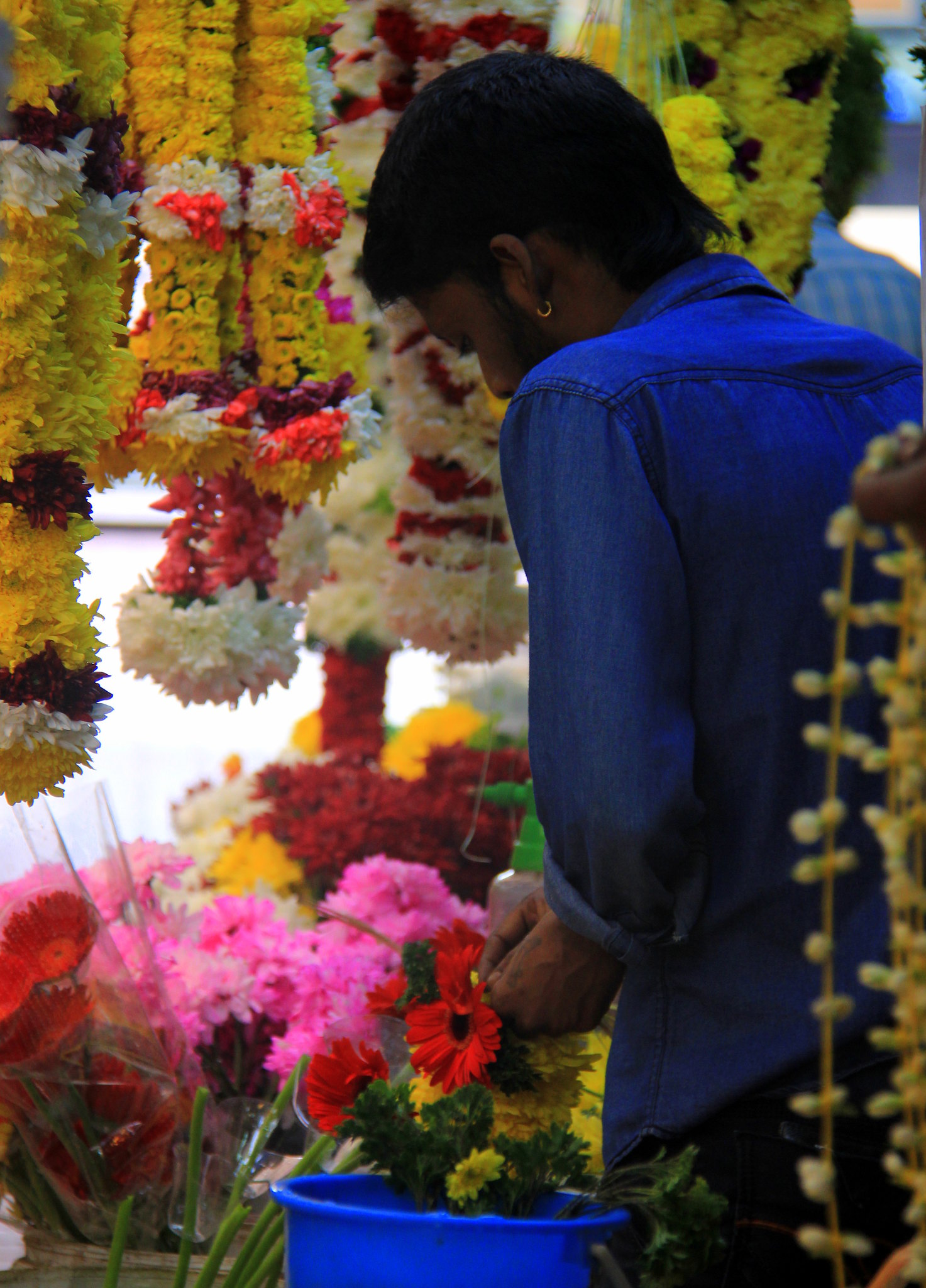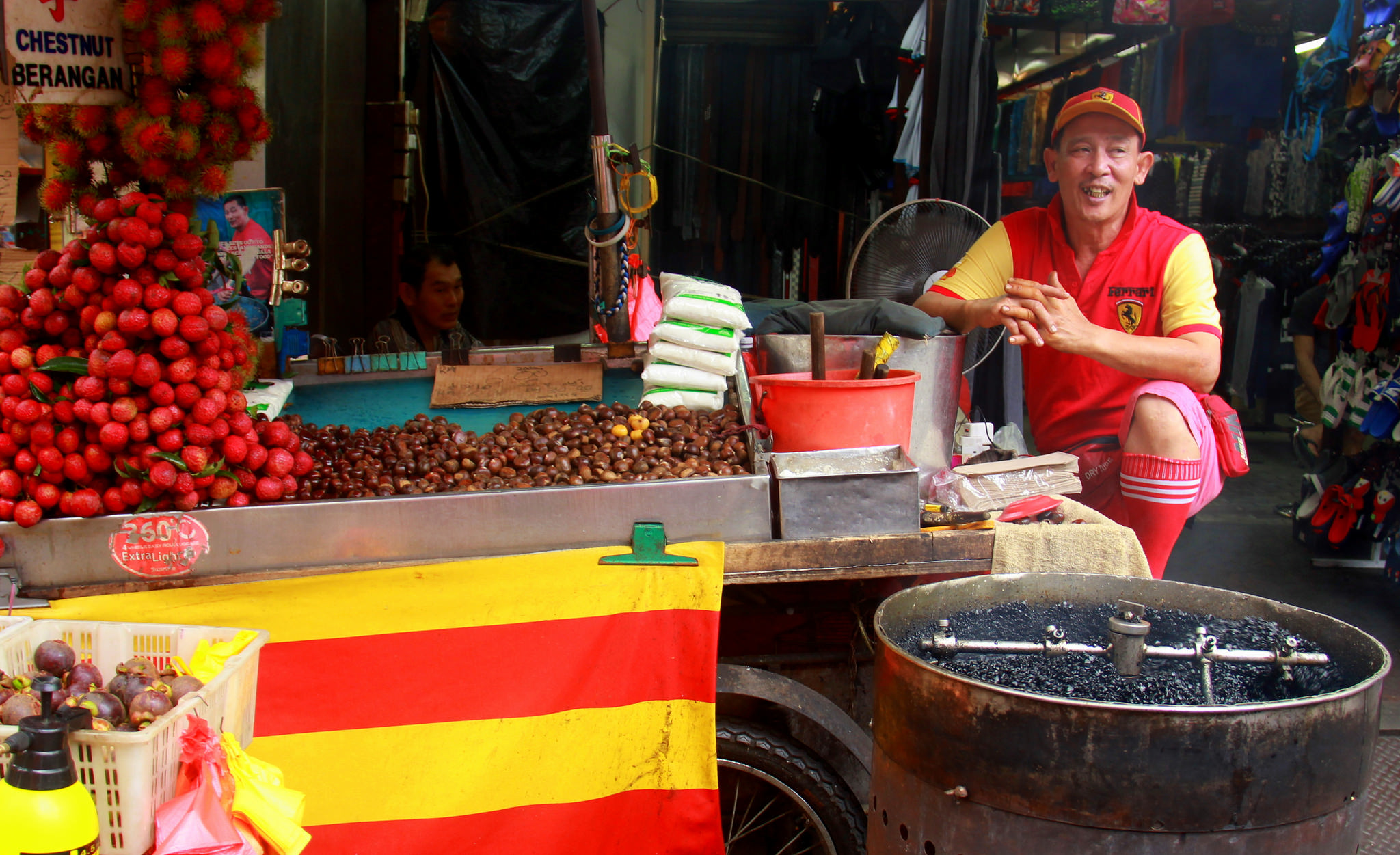I love food and I love walking. Thus, the combination of the two suits me just fine, especially if I am in a food-loving city like Kuala Lumpur. Malaysian cuisine is one of the most delightful ones in the world and the highlight is its delicious homogenous nature. The country‘s cultural diversity is beautifully reflected in its cuisine and here you can enjoy Indian, Malay, Chinese and/or their curiously delicious fusion. No matter in whichever part of Malaysia you visit, amazing food is a guaranteed feature and many of its cities vie for the title of being the food capital of the country. While Ipoh is my personal favourite, Melaka is a close contender and the food in Kuala Lumpur is pretty awesome too. I have visited KL quite a few times and have gorged on its food on each visit. The city food is as varied as the ethnicity of its residents itself and the street grub is to die for. To enjoy it to the fullest, on of my visits, I opted for a food walk in Kuala Lumpur and incidentally, Ramadan was going on at that time.
Recommended Read: What to eat in Greece?
Table of Contents
Are KL restaurants open during the day in Ramadan?
I booked my walk via a local company formed by a bunch of youngsters, all of whom had two things in common. They all loved to eat, especially the food in Kuala Lumpur and for them, there was no better place in the world than their city. It was a small group of four, including our guide and she turned out to be a cheerful food loving Chinese Malay girl. Katie was in college and provided the tours to fuel her passion for gastronomy. Steady money kept her going as well and she showed us the best places to eat in KL. Although it was Ramadan, there was plenty of food available everywhere and cafes and restaurants seemed to be doing brisk business. The tour lasted for three hours, after which we all went home filled up to the gills. As mentioned before, food in Kuala Lumpur is to die for and when you have a local showing you around, be rest assured that you will only be eating the best. Since it was a walking tour, we focused on only a small part of the city and needless to say, it was “the” area to eat out in Kuala Lumpur.

Malaysia is a food-loving country
Indian food at Brickfields
Our first stop was at Brickfields, Kuala Lumpur‘s Little India. Like its other counterparts, Brickfields was a slice of India (predominantly South India to be more particular) and it came along with quintessential Indian-ness. South Indian music blared from some shops, bright sarees dazzled from store windows and Indian brand names peeped from everywhere. Temples tolled, incense sticks coiled and busy salesmen strung thick flower garlands. A thick scent of spices filled the air and I could smell Indian food, even from a distance. They emanated from Tarani Food Corner, an open-air eatery which specialized in complete meals along with delicious snacks. Being super famished, we ordered like gluttons and soon our table got filled with various spicy dishes. Fritters of different kinds were served with a variety of dips and our rice meal set came with vegetables, dal and fish head curry. Malaysia‘s famous Roti Canai appeared on a separate plate and we ate like no tomorrow.
You may also like: The fiery Thai food of Isaan
Malaysian Indian food in Kuala Lumpur
Malaysian Indian food is basically of two distinct types. One hails from South India and is redolent with curry leaves. Many spices and coconut are generously used and they consist of medu vadai, masala vadai etc. The Mamak cuisine, on the other hand, is Indian Muslin dishes which have been adapted into a more Malaysian style. They are extremely popular and often offer cheap, delicious Nasi Kandar (you eat what you pay for). The buffet comes with rice, biryani, and many thick curry based items of vegetables, fish, chicken, and beef. The fish head curry and Indian rojak are Mamak cuisines biggest sellers and being a fish lover, I just had to have one before leaving the country. Mamak eateries are found in every nook and corner of Malaysia and the Ramadan food in Kuala Lumpur is heavily based on it.

Mamak cuisine is predominantly Indian Muslim.
Head to Chinatown for the real Hokkien Mee
Hokkien Mee has its origin in the Fujian province of China. It is made up of egg noodles and rice noodles stir-fried with eggs, pork, prawns, and squids. Served with vegetables, sambal sauce, and lime, Hokkien Mee is one of Malaysia‘s most popular dishes. Thousands of eateries dish out huge numbers of Hokkien Mee every day and it is an integral part of street food in Kuala Lumpur. Though the Hokkien mee served by most is quite delicious, KL‘s Restoran Kim Lian Kee is known for its best rendition. A much popular restaurant, it claims to be the inventor of the real Hokkien Mee and the rest to be all knockoffs. Now Chinatown is one of Kuala Lumpur‘s oldest and historic districts. It has a gorgeous Mahamariamman temple located quite close to a Chinese Taoist temple and is teeming with shops selling souvenirs, knockoff items and food. Many claim Chinatown to have the best street food in Kuala Lumpur and it seems to be quite true.
Suggested Read: Hong Kong Food Memories
Malaysian Chinese food in Kuala Lumpur
Malaysian Chinese food draws its origins from many different parts of China. Over the years, the original recipes evolved into their own distinct tastes and they explode with flavour. Incorporating Chinese cooking methods with local produce has resulted in a richly flavourful cuisine that looks Chinese, but tastes Malaysian. Filled with local ingredients like pandan leaves, balacan (shrimp paste) and spices, Malaysian Chinese food is simply drool worthy. At Restoran Kim Lian Kee, we tried out many such dishes along with a plum drink and it turned out that they specialized in more than just Hokkien Mee. We ordered for Hokkien Mee along with Char Kway Teow (flat rice noodles stir-fried with bean sprouts, chicken, eggs, chives and slices of preserved Chinese sausages), Yu Kong Hor, and pork-stuffed steamed buns. I especially loved the quirky Yu Kong Hor which has a raw egg sitting on top. Also known as Fried Noodle the raw egg has to be mixed fast while the keuy teow is still hot. Needless to say, the food was awesome as was the company and all around us Chinatown buzzed with action. The smell of roasted chestnuts mingled with meat barbecuing on skewers and large red Chinese lanterns swung in the breeze.

Then there is the Nyonya cuisine.
Ramadan spectacle
With the Chinatown experience, our Kuala Lumpur food walk got over and I started heading back to the hotel with a satisfied belly. My hotel was close to the Merdeka Square and I decided to stroll through it in lazy leisure. It was a wonderful afternoon spent pursuing some really good food in Kuala Lumpur and I was as pleased as a punch. Just when I thought, that I had seen the best of food in Kuala Lumpur, a beautiful Ramadan surprise unfolded in front of my eyes. A large berbuka puasa (breaking the fast in Malaysian) gathering was in progress in the open square and the cordoned off street held hundreds of devout faithful. They were all fasting and waiting patiently for the sun to set officially as volunteers laid out sheets full of cushions and plates. I watched in wonder, as everyone did their bit in perfect synchrony when prayer calls filled the air. Sunset was officially announced and after praying, the feasting began.
More from Malaysia: Delightful Georgetown

It is a country blessed with an abundance

And many blended flavours.
Ramadan food in Kuala Lumpur
The sight of such patience, perseverance in faith and community feeling was awe inspiring. All of us, tourists watched in respectful silence until it was time to move away. On my walk back to the hotel, Kuala Lumpur surprised me with more Ramadan specials and I found myself happily immersed in the city‘s Ramadan markets (pasar Ramadan). A very special feature of this time of the year, Ramadan Bazaars are open-air food markets where people buy food for breaking their fast. These lively bazaars, which spring up next to LRT stations work way past sunset and are popular with locals and tourists alike. Malaysians of all faiths and walks of life enjoy these markets and they are great places to sample authentic Malay cuisine. Also known as kampung cooking, Malay cuisine is not easily found as Mamak and Chinese dishes since their preparation is both tedious and time-consuming.
Malay food in Kuala Lumpur Ramadan bazaar
Traditional salads, dips, fermented durian, ayam golek (Ramadan special roast chicken), kueh (traditional local cakes) are some of the kampung dishes worth trying. These bazaars also have many Malaysian Indian dishes along with recent additions of lasagna, kebabs, and pizzas. Both fun and pocket-friendly, these are great ways to soak up local Kuala Lumpur culture while having a lot of fun as well.

Food in Kuala Lumpur

Is delicious,

Delightfully varied

And pocket friendly.

Explore Little India

For redolent curries, friiters

And an exotic feel.

For variety and different flavour

Head to Chinatown.

It is a great place

To enjoy Hokkien Mee

Soak up the local culture

Before heading to a Ramadan Bazaar.
RESPONSIBLE TRAVELING-BECAUSE I CARE

